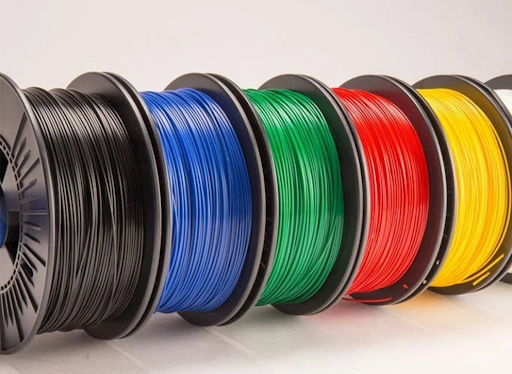In the realm of 3D printing, the choice of filament is paramount. Filament serves as the lifeblood of any 3D printer, determining the final printed object’s quality, strength, and versatility. With many options available in the market, navigating the world of 3D printer filament can be exciting and overwhelming. This comprehensive guide will delve into everything you need to know about 3D printer filaments, from types and materials to purchasing options and best practices.
Understanding 3D Printer Filament
At its core, 3D printer filament is the material used to create physical objects through additive manufacturing. Available in diverse formats, including spools of thermoplastic filaments, such as PLA (Polylactic Acid), ABS (Acrylonitrile Butadiene Styrene), PETG (Polyethylene Terephthalate Glycol), and others, each variant possesses distinct characteristics tailored for various applications and settings.
Types of 3D Printer Filament:
- PLA (Polylactic Acid): PLA stands out as one of the most sought-after and commonly employed filaments in 3D printing. Sourced from renewable materials such as corn starch or sugarcane, PLA boasts biodegradability, aligning with environmentally-conscious practices. Notable for its user-friendly nature, minimal warping tendencies, and vivid color palette, PLA emerges as an ideal choice for novices and enthusiasts alike in the realm of 3D printing.
- ABS (Acrylonitrile Butadiene Styrene): ABS filament is renowned for its strength, durability, and heat resistance. It’s commonly used in industrial applications and functional prototypes due to its ability to withstand higher temperatures and mechanical stress. However, ABS requires a heated print bed and a well-ventilated environment due to its tendency to emit fumes during printing.
- PETG (Polyethylene Terephthalate Glycol): PETG filament strikes a balance between the ease of use of PLA and the durability of ABS. It offers excellent layer adhesion, impact resistance, and chemical resistance, making it suitable for a wide range of applications, including mechanical parts, prototypes, and food-safe containers.
- TPU (Thermoplastic Polyurethane): TPU filament is a flexible and elastic material commonly used for printing soft and rubber-like objects, such as phone cases, shoe soles, and seals.
Choosing the Right Filament for Your Needs:
When selecting a filament for your 3D printing projects, several factors come into play:
- Application: Consider the intended use of the printed object and the desired properties, such as strength, flexibility, and heat resistance.
- Printer Compatibility: Ensure that the filament is compatible with your 3D printer’s specifications, including nozzle diameter, extruder temperature, and print bed requirements.
- Budget: Take into account the cost of the filament and balance it with your project requirements and budget constraints.
Where to Buy Filaments for 3D Printers in the USA:
Some popular options to buy filaments for 3D printing in the USA include:
- Amazon: Amazon boasts an extensive inventory of 3D printer filaments from various brands, offering competitive prices and fast shipping options for Prime members.
- MatterHackers: MatterHackers is a leading supplier of 3D printing materials, tools, and accessories, with a focus on quality and customer service. They offer a diverse range of filaments, including specialty materials and exclusive brands.
- FilamentOne: FilamentOne specializes in high-quality filaments sourced from reputable manufacturers worldwide.
- Micro Center: Micro Center is a favored spot among electronics enthusiasts, renowned for its extensive array of 3D printers, filaments, and accessories, all available at competitive prices across its retail locations throughout the USA.
Tips for Successful 3D Printing with Filament:
To achieve optimal results with your 3D printer filament, consider the following tips:
- Calibration: Calibrate your 3D printer’s settings, including nozzle temperature, print speed, and layer height, for each type of filament to ensure accurate and consistent prints.
- Bed Adhesion: Use proper bed adhesion techniques, such as applying a thin layer of adhesive or using a heated print bed and compatible surface material, to prevent warping and ensure successful prints.
- Storage: Store filaments in a dry, airtight container or vacuum-sealed bag to prevent moisture absorption, which can lead to print defects and nozzle clogs.
- Experimentation: Don’t be afraid to experiment with different filaments, colors, and settings to discover new possibilities and unleash your creativity.
Conclusion:
In summary, the role of 3D printer filament is crucial in the triumph of additive manufacturing endeavors, providing a diverse array of materials, properties, and applications to accommodate various requirements. Whether you’re an enthusiast, educator, or professional in the field, grasping the intricacies of filament selection, utilization, and upkeep is paramount for attaining optimal outcomes and harnessing the complete capabilities of 3D printing technology. With the insights and support outlined in this guide, you can confidently embark on your 3D printing venture, fostering creativity and precision along the way. Here’s to a successful printing journey!

